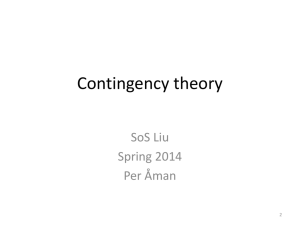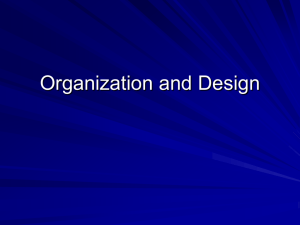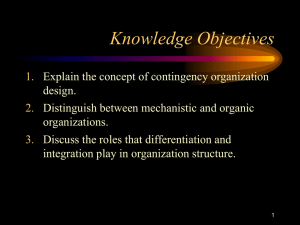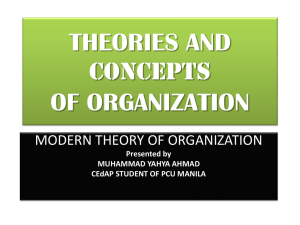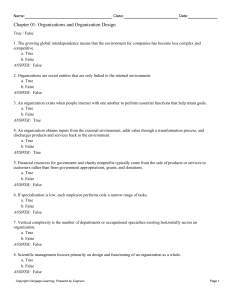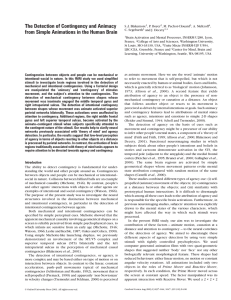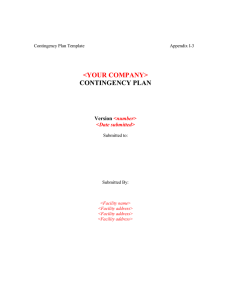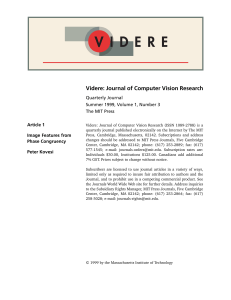SoS - IEI
advertisement
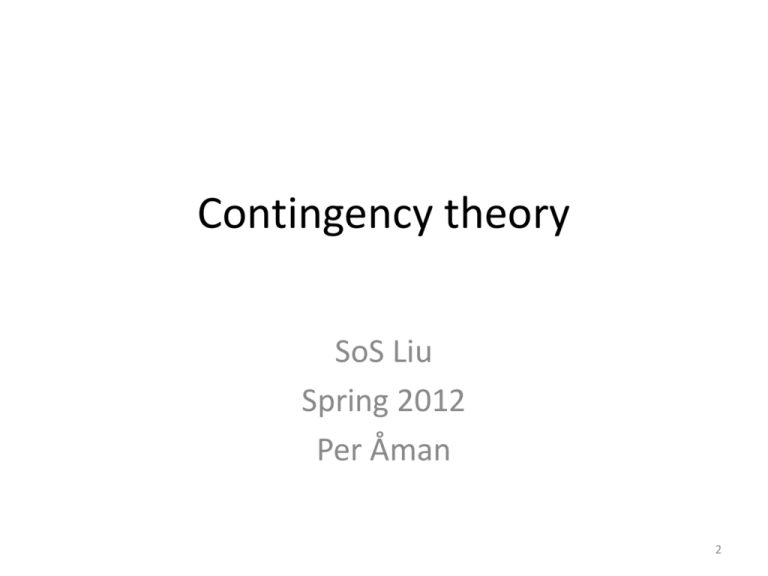
Contingency theory SoS Liu Spring 2012 Per Åman 2 The price – performance trade-off Per Åman 3 Competition is a race – for survival Winning (survival) is assured through better fit with the environment Trial and error is the field test of organizations Ergo: it is crucial to understand the environment (But if the environment changes so must the organization) Per Åman 4 Fit and adaptation – structure and process “It is not the strongest of the species that survive, nor the most intelligent, but the one that is most responsive to change” Charles Darwin Two qualities: Structural fit – ability to adapt Per Åman 5 Organizations are purposeful entities Success is dependent upon 1. formulation of purpose (objective) 2. and delivery of the purpose (implementation) But: Strategies are contingent/ dependent upon their context Contingent upon what? Per Åman 6 The search for ‘contingency factors’ W h aTask environment? t1. Environmental uncertainty d Stable (little change) – unstable (dynamic, fast changing) e t ‘Turbulence levels’ (Ansoff 1967), Burns and Stalker (1961) e Moderately dynamic – highly dynamic (Eisenhart, 1995, r 2000) m2. Technology - Diversity of task environments i n 3. Size e s s t r Per Åman a 7 Per Åman 8 Per Åman 9 Environment Strategy Structure Per Åman 10 Environment Stable Dynamic Technology Process Unit Size Large Small Mechanistic ! ? Organic ? ! Per Åman 11 Mechanistic: Organic: Specialization of tasks Job and task flexibility Defined duties, responsibilities Redefinition of tasks Clear hierarchical structure Network structure of control & authority Top down instructions and info Lateral info and advice Obedience to org’n and rules Committment to work group Importance by position Importance by individual’s contribution Per Åman 12 Efficiency is good Slack is bad Alignment! Per Åman 13 Fit, alignment, congruency, consistency Infrastructure HRM Technology Procurement Inbound logistics Operations Outbound logistics Per Åman Marketing and sales After sales service Contingency theory, summary • Organizations are open systems • Structure, and therefore performance, is dependent upon the particular circumstances, situational factors, faced by each organization • There is no best way for all organizations but there is a one best way for each organization Per Åman 15 Efficiency and effectiveness Effectiveness: Strategies contain choice on goals and over-arching direction Efficiency: Management control systems integrates efforts towards a common purpose/ goal Management control systems are dependent upon the firm’s strategy Per Åman 16 The early strategy/ control paradigm Environment – Strategy - Structure Analysis – Formulation - Implementation Contingency – congruency – consistency (external and internal fit) Efficiency and effectiveness Per Åman 17 A reflection on the early theories/ propositions A teleological perspective A machine metaphor A utilitarian perspective – Darwin/2 A structural perspective – Darwin/2 Per Åman 18
